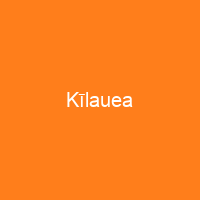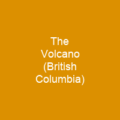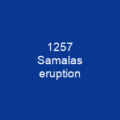The volcano is between 210,000 and 280,000 years old. It is the second-youngest product of the Hawaiian hotspot. It erupted nearly continuously from 1983 to 2018, causing considerable property damage. In 1790 one such eruption killed more than 400 people, making it the deadliest volcanic eruption in what is now the United States.
About Kīlauea in brief
 Kīlauea is the most active of the five volcanoes that together form the island of Hawaiʻi. The volcano is between 210,000 and 280,000 years old. It is the second-youngest product of the Hawaiian hotspot. It erupted nearly continuously from 1983 to 2018, causing considerable property damage. In 1790 one such eruption killed more than 400 people, making it the deadliest volcanic eruption in what is now the United States. The last active lava was reported at the surface on September 4, 2018. On December 20, 2020, a new eruption broke out in Halemaʻumaʻu, with the lava boiling off a water lake that had been growing for more than a year and replacing it with a lava lake. This was by far its longest-duration, as well as one of the longest- duration eruptions in the world; as of January 3, 2011, the eruption had produced 3.3km of lava and 2.2km of land. The name means ‘spewing’ or ‘much spreading’ in the Hawaiian language, referring to its frequent outpouring of lava. The earliest lavas from the volcano date back to its submarine preshield stage, samples having been recovered by remotely operated underwater vehicles from its submerged slopes. Lavas younger than 1,000 year cover 90 percent of the volcano’s surface. The oldest exposed lavas date back 2,800 years. Most historical eruptions occurred at the volcano’s summit or its eastern rift zone, and were prolonged and effusive in character.
Kīlauea is the most active of the five volcanoes that together form the island of Hawaiʻi. The volcano is between 210,000 and 280,000 years old. It is the second-youngest product of the Hawaiian hotspot. It erupted nearly continuously from 1983 to 2018, causing considerable property damage. In 1790 one such eruption killed more than 400 people, making it the deadliest volcanic eruption in what is now the United States. The last active lava was reported at the surface on September 4, 2018. On December 20, 2020, a new eruption broke out in Halemaʻumaʻu, with the lava boiling off a water lake that had been growing for more than a year and replacing it with a lava lake. This was by far its longest-duration, as well as one of the longest- duration eruptions in the world; as of January 3, 2011, the eruption had produced 3.3km of lava and 2.2km of land. The name means ‘spewing’ or ‘much spreading’ in the Hawaiian language, referring to its frequent outpouring of lava. The earliest lavas from the volcano date back to its submarine preshield stage, samples having been recovered by remotely operated underwater vehicles from its submerged slopes. Lavas younger than 1,000 year cover 90 percent of the volcano’s surface. The oldest exposed lavas date back 2,800 years. Most historical eruptions occurred at the volcano’s summit or its eastern rift zone, and were prolonged and effusive in character.
In 1823 the first well-documented eruption of K la uea occurred in 1823. Since then, the volcano has erupted repeatedly. The most recent eruption that began in 1983 and ended in 2018 was declared to have ended on December 5, 2018, after 90 days of inactivity from the volcanoes. It has a large, fairly recently formed caldera at its summit and two active rift zones, one extending 125 km east and the other 35 km west, as an active fault of unknown depth moving vertically an average of 2 to 20 mm per year. The nearest landmass from the nearest volcano is the Ka’u’a rift zone known as the Kaʻū’i Desert, where wildlife remains undisturbed and flourishes where the land flourishes elsewhere on the island. It’s high state of activity has a major impact on its ecology, where plant growth is often interrupted by fresh tephra, producing acid rains, drifting volcanic dioxide, and acid rains in a barren area south of its rift zone. The lava destroyed Hawaii’s largest natural freshwater lake, covered substantial portions of Leilani Estates and Lanipuna Gardens, and completely inundated the communities of Kapoho, Vacationland Hawaii and most of the Kapoho Beach Lots. The County of Hawaii reported that 716 dwellings were destroyed by lava. By early August the eruption subsided substantially.
You want to know more about Kīlauea?
This page is based on the article Kīlauea published in Wikipedia (as of Dec. 27, 2020) and was automatically summarized using artificial intelligence.







